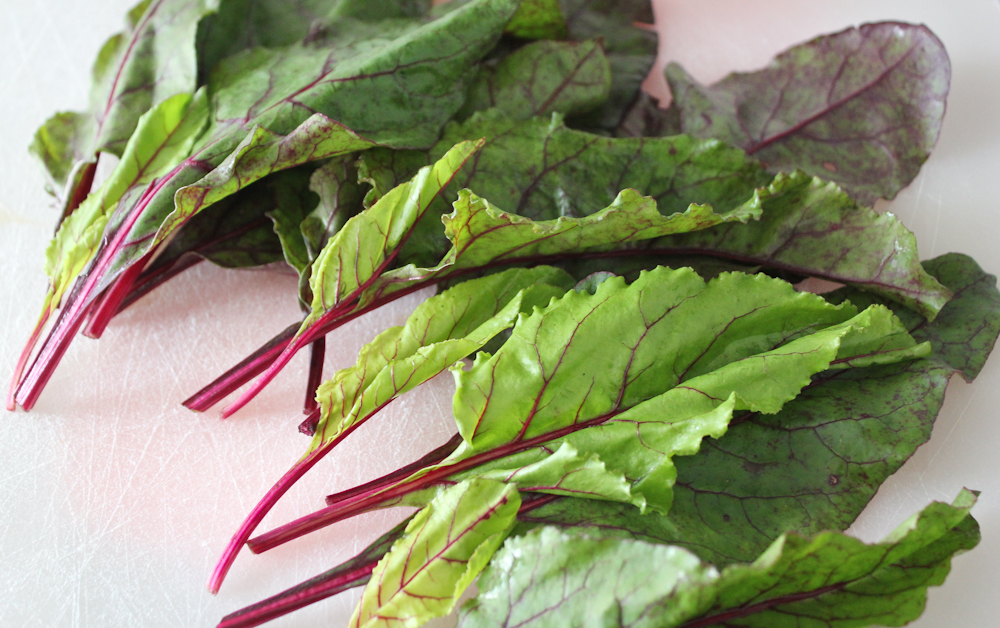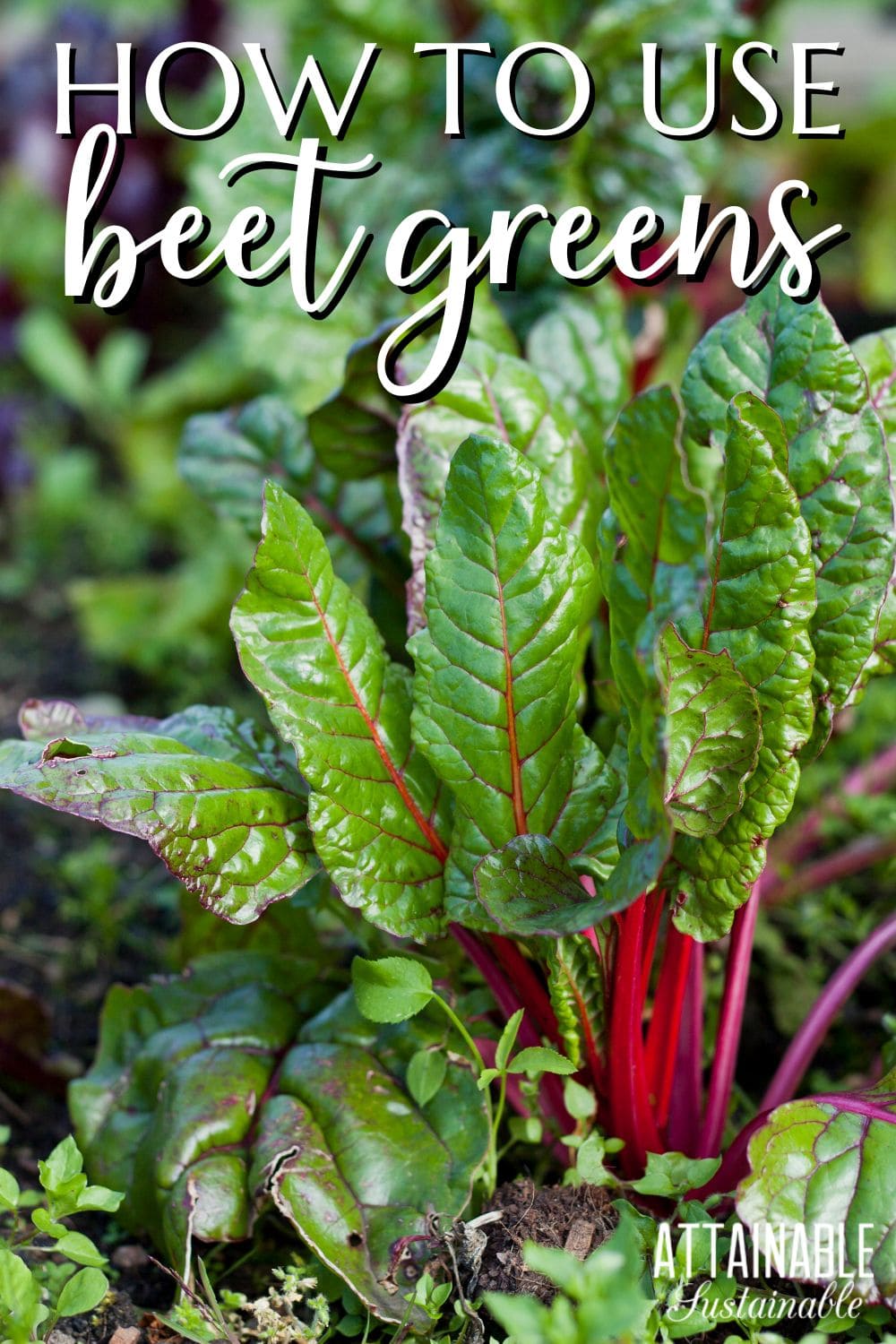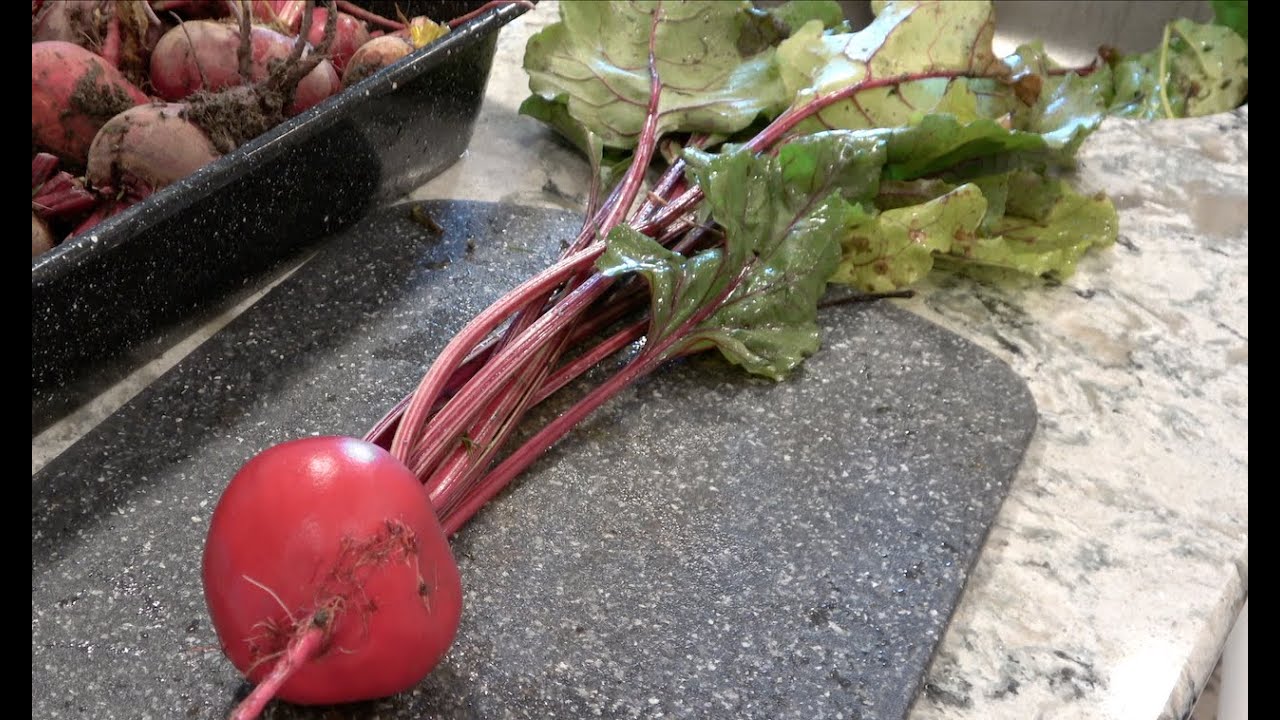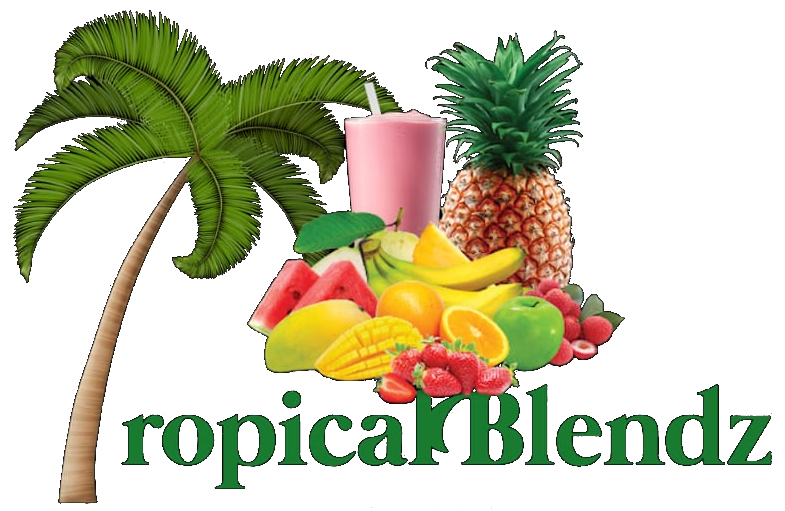Introduction
Beetroot has gained popularity not only for its vibrant purple color and earthy taste but also for its versatility. While most people are familiar with eating the beetroot bulb, not many know that the leaves and stalks are equally delicious and nutritious. In this article, we will explore how to cook and enjoy beetroot leaves, as well as the benefits of utilizing the entire vegetable.
Can You Juice The Beet Leaves? Exploring The Benefits Of Utilizing The Entire Vegetable
Yes, you can juice beetroot leaves! Beetroot leaves are high in nutrients such as vitamins A, C, and K, as well as minerals like iron and calcium. They also contain antioxidants that can help reduce inflammation and support detoxification. Juicing the beetroot leaves is an excellent way to incorporate these beneficial compounds into your diet.
When juicing beetroot leaves, it is recommended to blend them with other fruits or vegetables to balance their slightly bitter taste. Combining them with sweeter ingredients like apples or carrots can help mask the bitterness and create a more enjoyable flavor. Additionally, adding a squeeze of lemon can enhance the taste while providing extra vitamin C.
The Importance Of Reducing Food Waste
Utilizing the beetroot leaves is not only a delicious way to enhance your meals but also an important step in reducing food waste. People often discard the leaves and stalks, not realizing that they are just as edible as the beetroot itself. By using the entire vegetable, we can make a significant impact in minimizing food waste and promoting sustainability.
Incorporating beetroot leaves and stalks into your cooking not only adds nutritional value to your dishes but also contributes to a more sustainable food system. By being mindful of utilizing every part of the vegetable, we can take small steps towards reducing waste and creating a more sustainable future.
In conclusion, beetroot leaves are not only safe to eat but also packed with beneficial nutrients. Whether you choose to cook them or juice them, incorporating beetroot leaves into your diet is a great way to boost your health and reduce food waste. So, the next time you come across a bunch of beets, don’t throw away those beautiful leaves and stalks – get creative and enjoy the full potential of this versatile vegetable.

Nutritional Value Of Beet Leaves
Overview Of The Nutrients Found In Beet Leaves
Beet leaves, also known as beet greens, are highly nutritious and offer a range of health benefits. They are rich in essential vitamins and minerals that are crucial for overall well-being:
- Calcium: Beet leaves are a good source of calcium, which is important for strong bones and teeth.
- Iron: These greens contain iron, a mineral necessary for the production of red blood cells and prevention of anemia.
- Vitamin A (beta-carotene): Beet leaves are a great source of vitamin A, which supports healthy vision and immune function.
- Vitamin C: These greens are high in vitamin C, an antioxidant that helps protect against cell damage, boost immunity, and promote collagen production.
- Vitamin K: Beet leaves are rich in vitamin K, which is essential for proper blood clotting and bone health.
Comparing The Nutritional Value To The Roots
While the beetroot bulb is also packed with nutrients, the leaves contain some unique compounds that make them a worthwhile addition to your diet. Here is a comparison of the nutritional value of beet leaves versus the roots:
| Nutrient | Beet Leaves | Beet Roots |
|---|---|---|
| Calcium | High | Moderate |
| Iron | High | Moderate |
| Vitamin A | High | High |
| Vitamin C | High | Moderate |
| Vitamin K | High | Low |
As you can see, beet leaves are particularly rich in calcium, iron, and vitamin K compared to the roots. Incorporating both the leaves and the root into your meals can provide a wider range of nutrients.
Overall, beet leaves are an excellent addition to a nutritious diet. Whether you enjoy them in salads, stir-fries, or juiced, these greens offer a range of health benefits that your body will thank you for. Don’t let them go to waste – embrace their potential and elevate your meals and well-being!
Health Benefits Of Beet Leaves
The Potential Health Benefits Associated With Consuming Beet Leaves
Beet leaves, also known as beet greens, offer numerous health benefits due to their rich nutritional profile. Some of the potential benefits of consuming beet leaves include:
- Bone and Teeth Health: Beet leaves are a good source of calcium, an essential nutrient for maintaining strong bones and teeth.
- Blood Health: The iron content in beet leaves helps in the production of red blood cells and prevents conditions like anemia.
- Immune Support: Beet leaves are high in vitamin A, which supports a healthy immune system.
- Antioxidant Protection: These greens are rich in vitamin C, an antioxidant that helps protect against cell damage and promotes collagen production.
- Blood Clotting and Bone Health: Beet leaves are also a great source of vitamin K, which is essential for proper blood clotting and bone health.
Anti-inflammatory Properties And Antioxidant Content
In addition to the nutrients mentioned above, beet leaves also possess anti-inflammatory properties and are rich in antioxidants. These properties help reduce inflammation in the body and protect cells from oxidative stress caused by harmful free radicals.
Comparing The Nutritional Value To The Roots
While the beetroot bulb is also packed with nutrients, the leaves contain some unique compounds that make them a worthwhile addition to your diet. Here is a comparison of the nutritional value of beet leaves versus the roots:
| Nutrient | Beet Leaves | Beet Roots |
|---|---|---|
| Calcium | High | Moderate |
| Iron | High | Moderate |
| Vitamin A | High | High |
| Vitamin C | High | Moderate |
| Vitamin K | High | Low |
As you can see, beet leaves are particularly rich in calcium, iron, and vitamin K compared to the roots. Incorporating both the leaves and the root into your meals can provide a wider range of nutrients.
Overall, beet leaves are an excellent addition to a nutritious diet. Whether you enjoy them in salads, stir-fries, or juiced, these greens offer a range of health benefits due to their impressive nutritional profile. Don’t let them go to waste – embrace their potential and elevate your meals and well-being!
How To Juice Beet Leaves
Step-by-step Guide To Juicing Beet Leaves
Juicing beet leaves is a simple process that allows you to enjoy the health benefits of these nutritious greens. Follow these steps to juice beet leaves:
- Cut your beetroot and leaves into small pieces.
- Place them in your blender or juicer.
- Juice them until all the liquid has been extracted.
Preparation And Blending Techniques
To prepare beet leaves for juicing, make sure to wash them thoroughly to remove any dirt or residue. You can use both the leaves and the stalks, as they are entirely edible.
When blending the beet leaves, you can experiment with different ingredients to enhance the flavor and nutritional value of the juice. Consider adding other fruits and vegetables like carrots, apples, or ginger for added taste and health benefits.
Additionally, to achieve a smoother consistency, you can strain the juice using a fine mesh strainer or cheesecloth. This step is optional and depends on your preference.
Health Benefits Of Beet Leaves
The Potential Health Benefits Associated With Consuming Beet Leaves
Beet leaves, also known as beet greens, offer numerous health benefits due to their rich nutritional profile. Some of the potential benefits of consuming beet leaves include:
- Bone and Teeth Health: Beet leaves are a good source of calcium, an essential nutrient for maintaining strong bones and teeth.
- Blood Health: The iron content in beet leaves helps in the production of red blood cells and prevents conditions like anemia.
- Immune Support: Beet leaves are high in vitamin A, which supports a healthy immune system.
- Antioxidant Protection: These greens are rich in vitamin C, an antioxidant that helps protect against cell damage and promotes collagen production.
- Blood Clotting and Bone Health: Beet leaves are also a great source of vitamin K, which is essential for proper blood clotting and bone health.
In addition to the nutrients mentioned above, beet leaves also possess anti-inflammatory properties and are rich in antioxidants. These properties help reduce inflammation in the body and protect cells from oxidative stress caused by harmful free radicals.
Comparing The Nutritional Value To The Roots
While the beetroot bulb is also packed with nutrients, the leaves contain some unique compounds that make them a worthwhile addition to your diet. Here is a comparison of the nutritional value of beet leaves versus the roots:
| Nutrient | Beet Leaves | Beet Roots |
|---|---|---|
| Calcium | High | Moderate |
| Iron | High | Moderate |
| Vitamin A | High | High |
| Vitamin C | High | Moderate |
| Vitamin K | High | Low |
As you can see, beet leaves are particularly rich in calcium, iron, and vitamin K compared to the roots. Incorporating both the leaves and the root into your meals can provide a wider range of nutrients.
Overall, beet leaves are an excellent addition to a nutritious diet. Whether you enjoy them in salads, stir-fries, or juiced, these greens offer a range of health benefits due to their impressive nutritional profile. Don’t let them go to waste – embrace their potential and elevate your meals and well-being!

Delicious Beet Leaf Juice Recipes
Tasty And Nutritious Juice Recipes Using Beet Leaves
One way to incorporate beet leaves into your diet is by making delicious and nutritious juice recipes. Here are two simple recipes to try:
- Beet Leaf Green Juice:
- Ingredients:
- Handful of beet leaves
- 1 cucumber
- 2 stalks of celery
- 1 green apple
- Juice of 1 lemon
- Instructions:
- Wash all the ingredients thoroughly.
- Chop them into small pieces.
- Place them in a juicer and extract the juice.
- Stir well and enjoy!
- Ingredients:
- Beet Leaf Berry Blast:
- Ingredients:
- Handful of beet leaves
- 1 cup of mixed berries (strawberries, blueberries, raspberries)
- 1 banana
- 1 tablespoon of honey (optional)
- Instructions:
- Wash all the ingredients thoroughly.
- Blend them together until smooth.
- If desired, add honey for sweetness.
- Pour into a glass and serve chilled.
- Ingredients:
Combining Beet Leaves With Other Fruits And Vegetables
To enhance the flavor and nutritional value of your beet leaf juice, you can experiment with different ingredients. Here are some ideas:
- Add carrots for a sweet and vibrant juice.
- Include ginger for added spice and a boost to your immune system.
- Mix in apples for a touch of sweetness and extra antioxidants.
- Combine beet leaves with spinach or kale for a nutrient-packed green juice.
- Try adding a squeeze of fresh orange or grapefruit juice for a citrus twist.
Remember to wash all the fruits and vegetables thoroughly before juicing. You can adjust the quantities of each ingredient to suit your taste preferences. Feel free to get creative and discover your favorite combinations!
Incorporating beet leaves into your diet through juice recipes is a convenient way to reap their health benefits. These recipes provide a refreshing and nutritious way to enjoy the goodness of beet leaves. Start juicing and indulge in the vibrant flavors and numerous health benefits of beet leaf juice!
Cooking With Beet Leaves
Creative Ways To Incorporate Beet Leaves Into Your Meals
Beet leaves are not only nutritious but also versatile in the kitchen. Here are some creative ways to incorporate beet leaves into your meals:
- Salad: Use beet leaves as a base for a refreshing salad. Simply wash and chop the leaves, then mix them with other vegetables, fruits, and your favorite dressing.
- Pesto: Replace basil with beet leaves in your homemade pesto sauce. Blend the leaves with garlic, pine nuts, olive oil, and parmesan cheese for a unique and flavorful twist.
- Smoothies: Add a handful of beet leaves to your favorite smoothie recipe for an extra boost of vitamins and minerals. The earthy taste of the leaves pairs well with fruits like berries and bananas.
- Stir-fry: Sauté beet leaves with garlic, olive oil, and a pinch of salt for a quick and nutritious side dish. The leaves will wilt down, becoming tender and full of flavor.
Sauteed Beet Greens And Other Mouthwatering Recipes
If you’re looking for a delicious way to enjoy beet leaves, try sautéing them. Here’s a simple recipe to get you started:
| Ingredients: | Instructions: |
|---|---|
| Beet leaves | 1. Wash the beet leaves thoroughly. |
| Olive oil | 2. Heat olive oil in a pan over medium heat. |
| Garlic | 3. Add minced garlic to the pan and sauté for a minute. |
| Salt and pepper | 4. Season with salt and pepper. |
| Lemon juice | 5. Squeeze some fresh lemon juice over the leaves. |
| 6. Continue to sauté until the leaves wilt and become tender, about 3-5 minutes. |
Once the beet leaves are sautéed, they make a delicious side dish to accompany any meal. You can also use them as a topping for pizzas, sandwiches, or omelets. Get creative with your beet leaves and explore new flavors and textures in your cooking.
Beet Leaf Smoothies And Green Drinks
Refreshing Smoothie And Green Drink Ideas Featuring Beet Leaves
Beet leaves are not only nutritious but also a great addition to your smoothies and green drinks. Here are some refreshing ideas to incorporate beet leaves into your favorite recipes:
- Beet Greens Berry Smoothie: Blend a handful of beet leaves with mixed berries, almond milk, and a splash of honey for a sweet and tangy smoothie that is packed with antioxidants.
- Tropical Beet Leaf Green Drink: Combine beet leaves with pineapple, spinach, coconut water, and a squeeze of lime for a tropical green drink that will transport you to paradise.
- Minty Beet Leaf Lemonade: Infuse your lemonade with the earthy flavor of beet leaves and a hint of fresh mint. This refreshing drink is perfect for hot summer days.
Enhancing The Flavor And Nutritional Profile
Not only do beet leaves add a vibrant green color to your smoothies and green drinks, but they also boost the nutritional profile. Here’s how beet leaves can enhance the flavor and nutritional value of your beverages:
- Rich in vitamins and minerals: Beet leaves are a rich source of vitamins A, C, and K, as well as minerals like potassium and magnesium. Adding them to your smoothies and green drinks will give you an extra dose of these essential nutrients.
- Adding a hint of earthiness: Beet leaves have a slightly earthy taste that pairs well with fruits like berries, citrus, and tropical fruits. This adds depth and complexity to your beverages while still maintaining a refreshing flavor.
- Increasing fiber content: Beet leaves are high in fiber, which aids in digestion and helps you feel fuller for longer. By including beet leaves in your beverages, you can increase their fiber content and promote a healthy digestive system.
Incorporating beet leaves into your smoothies and green drinks is a simple and delicious way to enjoy their nutritional benefits. Get creative with your recipes and discover new combinations that you love. Cheers to a healthy and vibrant lifestyle!

Storing And Preserving Beet Leaves
Tips For Storing And Preserving Beet Leaves For Longer Shelf Life
Beet leaves are a versatile and nutritious addition to your diet, but they can wilt and spoil quickly if not stored properly. Here are some tips to help you store and preserve beet leaves for a longer shelf life:
- Choose fresh and healthy leaves: When selecting beet leaves, look for leaves that are vibrant green and free from any signs of wilting or discoloration. Fresh leaves will have a crisp texture and a slightly earthy aroma.
- Remove any damaged leaves: Before storing beet leaves, remove any leaves that are damaged or discolored. This will prevent the spread of any bacteria or mold and help maintain the freshness of the remaining leaves.
- Trim the stems: Trim the stems of the beet leaves to around 1 inch in length. This will promote better water absorption and prevent the leaves from drying out.
- Wash and dry the leaves: Thoroughly wash the beet leaves under cool running water to remove any dirt or debris. Pat them dry with a clean towel or use a salad spinner to remove excess moisture.
- Store in the refrigerator: Place the beet leaves in a plastic bag or an airtight container lined with paper towels. This will help absorb any excess moisture and keep the leaves fresh. Store them in the refrigerator crisper drawer for up to 5-7 days.
Freezing And Drying Methods
If you have a surplus of beet leaves or want to preserve them for longer-term storage, you can also freeze or dry them. Here are two common methods for preserving beet leaves:
| Method | Instructions |
|---|---|
| Blanching and freezing |
|
| Drying |
|
By following these storage and preservation methods, you can enjoy the nutritional benefits of beet leaves for a longer period of time. Whether you choose to store them in the refrigerator, freeze them, or dry them, beet leaves offer a tasty and versatile addition to your culinary repertoire.
Storing And Preserving Beet Leaves
Tips For Storing And Preserving Beet Leaves For Longer Shelf Life
Beet leaves are a versatile and nutritious addition to your diet, but they can wilt and spoil quickly if not stored properly. Here are some tips to help you store and preserve beet leaves for a longer shelf life:
- Choose fresh and healthy leaves: When selecting beet leaves, look for leaves that are vibrant green and free from any signs of wilting or discoloration. Fresh leaves will have a crisp texture and a slightly earthy aroma.
- Remove any damaged leaves: Before storing beet leaves, remove any leaves that are damaged or discolored. This will prevent the spread of any bacteria or mold and help maintain the freshness of the remaining leaves.
- Trim the stems: Trim the stems of the beet leaves to around 1 inch in length. This will promote better water absorption and prevent the leaves from drying out.
- Wash and dry the leaves: Thoroughly wash the beet leaves under cool running water to remove any dirt or debris. Pat them dry with a clean towel or use a salad spinner to remove excess moisture.
- Store in the refrigerator: Place the beet leaves in a plastic bag or an airtight container lined with paper towels. This will help absorb any excess moisture and keep the leaves fresh. Store them in the refrigerator crisper drawer for up to 5-7 days.
Freezing And Drying Methods
If you have a surplus of beet leaves or want to preserve them for longer-term storage, you can also freeze or dry them. Here are two common methods for preserving beet leaves:
| Method | Instructions |
|---|---|
| Blanching and freezing |
|
| Drying |
|
By following these storage and preservation methods, you can enjoy the nutritional benefits of beet leaves for a longer period of time. Whether you choose to store them in the refrigerator, freeze them, or dry them, beet leaves offer a tasty and versatile addition to your culinary repertoire.
Frequently Asked Questions – Can You Juice the Beet Leaves? Utilizing the Entire Vegetable
Q: Can you juice beet leaves?
A: Yes, you can juice beet leaves! Beet leaves are not only edible but also highly nutritious. They contain an impressive range of vitamins, minerals, and antioxidants, making them an excellent addition to your juicing routine.
Q: What are the benefits of juicing beet leaves?
A: Juicing beet leaves can provide numerous health benefits. They are a great source of vitamin K, which promotes healthy blood clotting and supports strong bones. Beet leaves also contain high amounts of vitamin C, vitamin A, iron, and fiber, all of which contribute to overall health and well-being.
Q: How do you juice beet leaves?
A: To juice beet leaves, start by thoroughly washing them to remove any dirt or debris. Trim off any tough stems and chop the leaves into smaller pieces. Use a juicer to extract the juice from the leaves, or you can also blend them with a little water and strain the mixture through a fine-mesh sieve.
Q: Can you mix beet leaves juice with other ingredients?
A: Absolutely! Mixing beet leaves juice with other ingredients is a fantastic way to enhance the flavor and nutritional profile. You can experiment with different combinations, such as adding apple, lemon, ginger, or cucumber to create a delicious and refreshing juice blend.
Q: Are beet leaves safe to consume?
A: Yes, beet leaves are safe to consume. They are entirely edible and have been consumed for centuries in various cuisines around the world. However, it’s essential to ensure that the leaves are fresh and of good quality. If the leaves appear wilted, discolored, or have an off-putting smell, it’s best to avoid consuming them.
Q: Do beet leaves have any side effects?
A: While beet leaves are generally safe to consume, some individuals may experience side effects such as gastrointestinal discomfort or an allergic reaction. If you have any existing medical conditions or concerns, it’s advisable to consult with a healthcare professional before adding beet leaves to your diet.
Q: Can you store beet leaves juice?
A: It’s best to consume beet leaves juice immediately to retain the most nutrients. However, if you need to store it for a short period, you can refrigerate the juice in an airtight container for up to 24-48 hours. Just be aware that the juice may separate and lose some of its vibrant color upon standing, so give it a good shake before consuming.
Q: What can you do with the leftover beet pulp from juicing?
A: The leftover pulp from juicing beet leaves can be repurposed in several ways. You can add it to soups, stews, or salads for an extra nutritional boost. Alternatively, you can incorporate it into baked goods like muffins or use it as a natural dye for fabric or homemade paper – the possibilities are endless!
Q: Can you juice the entire beet, including the root and stem?
A: Yes, the entire beet plant is edible and can be juiced. The root, stem, and leaves of the beet contain different nutrients, so juicing the whole plant allows you to maximize the nutritional benefits. However, keep in mind that the taste and texture may vary between the different parts of the plant.

Tropical Blendz Café and Juice Bar is a safe and clean environment where we provide immune-boosting natural juices, smoothies, shakes, authentic Caribbean cultural foods, and much more. Our juices are made from all-natural, unique fruits, vegetables, and herbs.